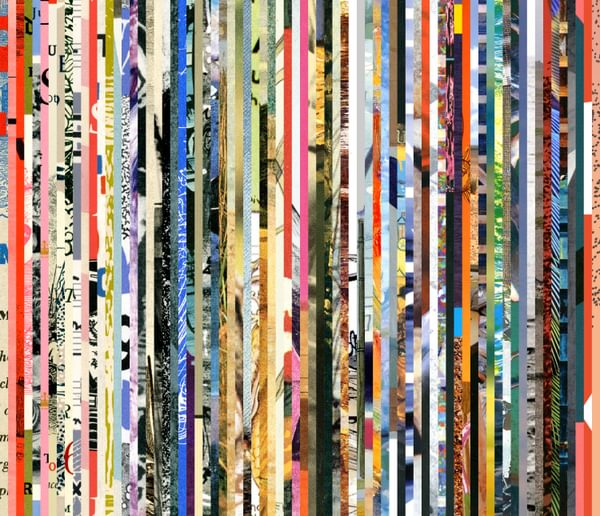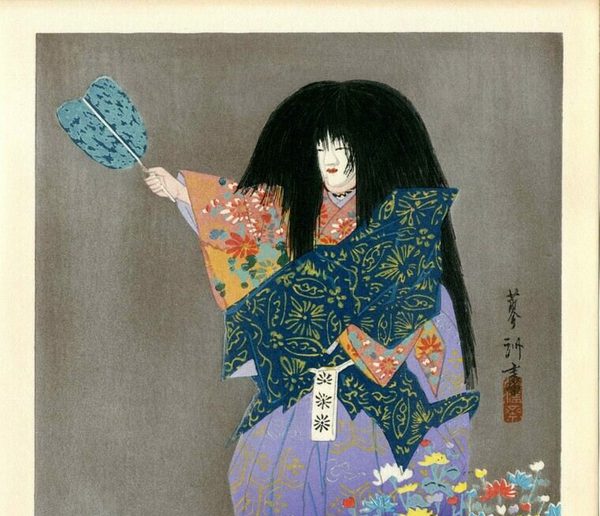
Sumidagawa
Sumidagawa, one of the most renowned Noh plays, performed in the Concert Hall by acclaimed Japanese artists – truly an exciting prospect.
It will be preceded by a newly written English re-telling of the story written by Xanthe Gresham-Knight and the writer and dramaturg Gareth Mattey.
- Xanthe Gresham-Knight:
- A Tale of the Sumida River (25’)
- Kanze Motomasa:
- Sumidagawa (90')
Shizuka Mikata shite, mother
Seigo Mikuriya waki, ferryman
Monet Hirai kokata, child
Gasho Yamanaka jiutai chorus
Kohei Kawaguchi jiutai chorus
Yasuki Kobayakawa jiutai chorus
Yasumitsu Kobayakawa jiutai chorus
Yasuhiro Sakoh nohkan flute
Tatsushi Narita kotsuzumi shoulder drum
Tetsuya Yamamoto otsuzumi hip drum
Xanthe Gresham-Knight storyteller and writer
Gareth Mattey co-writer and dramaturg
Akiko Yanagisawa creative producer
Sumidagawa is presented in partnership with Noh Reimagined, produced by Akiko Yanagisawa (Mu Arts Japan).
With thanks to Professor Sir Barry Ife for his kind support.
Sumidagawa (“Sumida River”), a masterpiece of Japanese Noh (traditional masked dance-drama), returns to the Aldeburgh Festival for the first time in 33 years. It is presented by exceptional Noh performers from Japan including Shizuka Mikata in the role of the mother and the kotsuzumi player Tatsushi Narita. It will be preceded by a newly written English re-telling of the story by Xanthe Gresham-Knight.
Sumidagawa made a great impression on Britten and Pears after their witnessing a performance of the work in 1956, being the inspiration for Britten’s Curlew River (1964). In 1973, the classical theatre of Japan – Noh, Bunraku, Buyo and Kabuki – was celebrated in an illustrated lecture by Colin Graham, who produced and designed the setting for the first production of Curlew River. This was followed later by performances of drama, including Sumidagawa itself, at Snape Maltings. In 1991, Festival audiences took in both Sumidagawa and Curlew River in one night, performed by the Tatsuji Hayashi Company.
Noh Sumidagawa is presented in partnership with Noh Reimagined, produced by Akiko Yanagisawa (Mu Arts). Noh Reimagined is a series of festivals and projects aiming to present classical Noh masterpieces by leading Noh artists along with commissioned new works by innovative contemporary British artists.
Noh
Reimagined aims to foster a dynamic dialogue between classical and contemporary
arts to explore new meanings and interpretations which transcend time and
cultural boundaries.
Image: Kano Shun'oku (early 18th century, Edo period): Folding Albums of Noh / Nō on-ekagami
Image courtesy of Hosei University Noh Theatre Research Institute
Curlew River and Sumidagawa podcast
“I shall never forget the impact made on me by the Japanese theatre”. This was Britten, broadcasting to Japan in 1958, two years after his memorable trip to the country in 1956. He had visited as part of a Far East tour beginning in 1955 and which included stays in Bali, Hong Kong and India. The whole trip had a deep and lasting influence on his compositions from around that time onwards, and perhaps most significantly on his 1964 Church Parable Curlew River. This podcast, hosted by Dr Lucy Walker, explores the background to this fascinating work, including the specific influence of the Japanese Nō play Britten attended, twice, in 1956: Sumidigawa.

Explore the Festival
The 75th Aldeburgh Festival of Music and the Arts
07 – 23 June 2024
